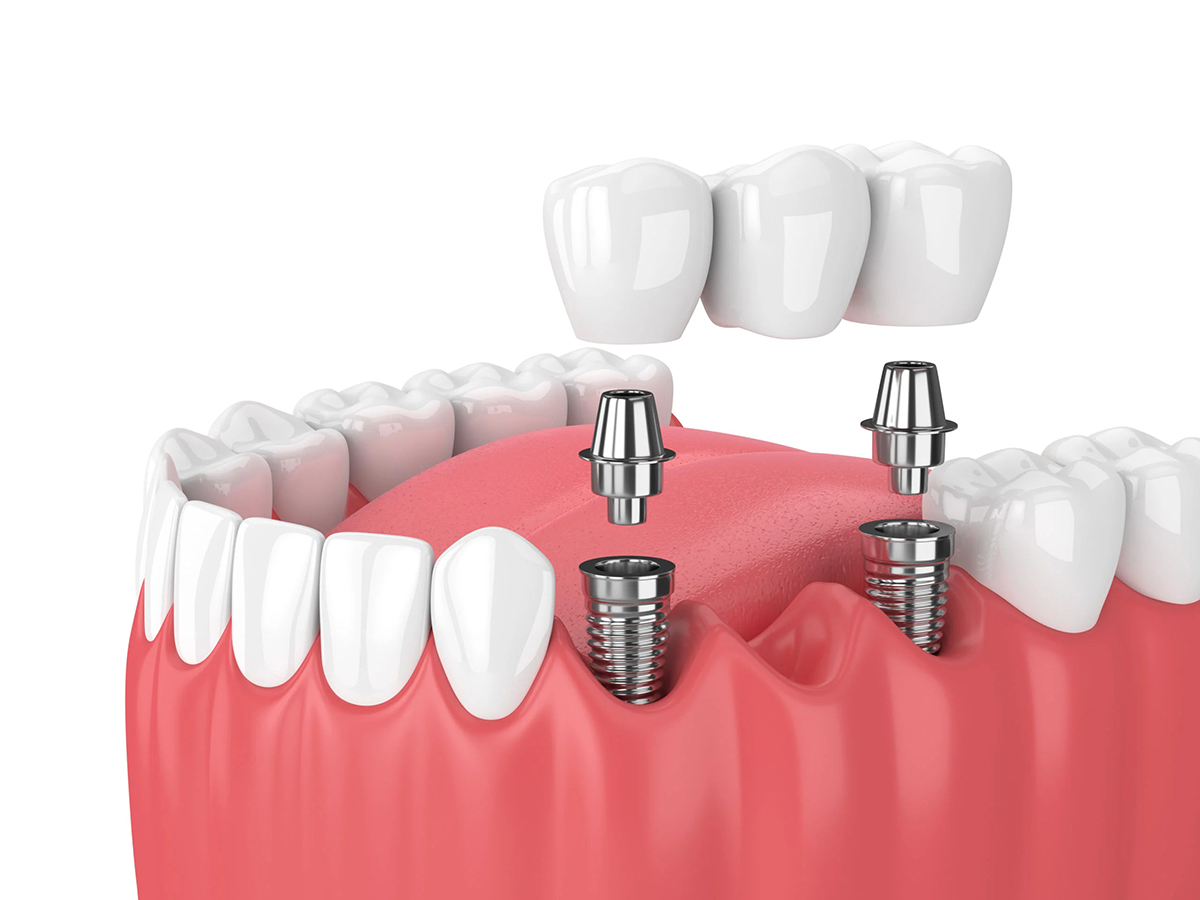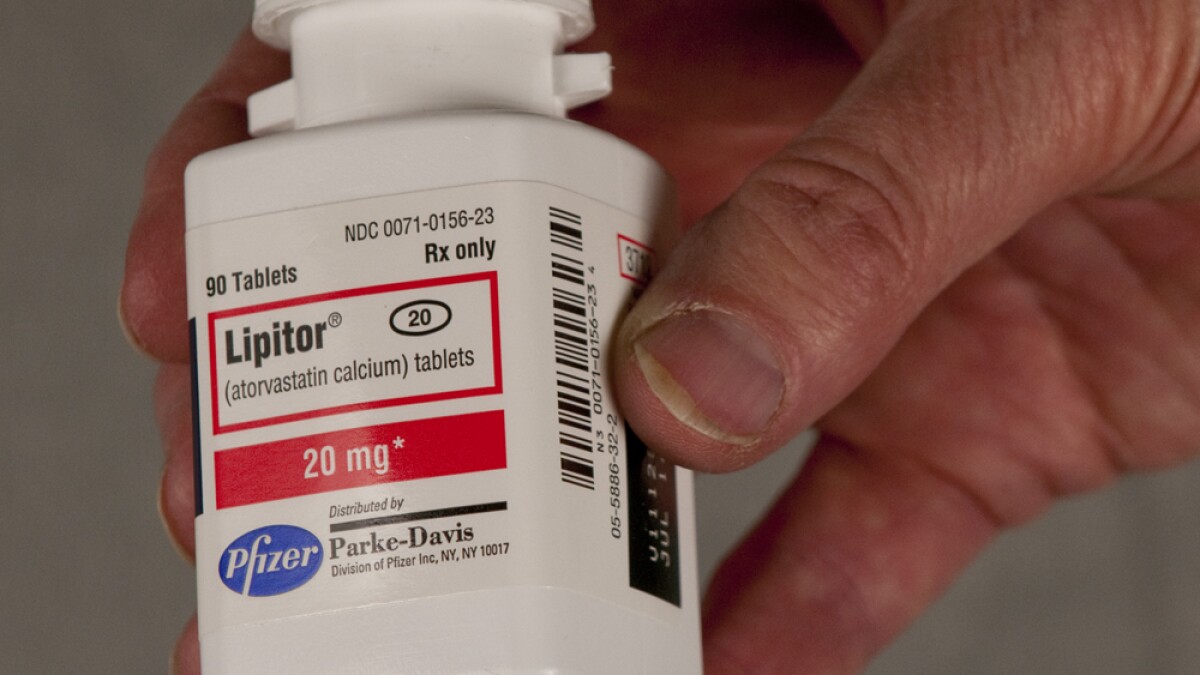

Finance
How Much Is A Dental Bridge Without Insurance
Modified: December 30, 2023
Looking for affordable dental bridge options? Find out how much a dental bridge costs without insurance and explore financing options to fit your budget.
(Many of the links in this article redirect to a specific reviewed product. Your purchase of these products through affiliate links helps to generate commission for LiveWell, at no extra cost. Learn more)
Table of Contents
Introduction
Having a healthy and complete smile is essential not just for your oral health but also for your overall well-being. However, dental issues such as missing teeth can impact your confidence and quality of life. One common solution for replacing missing teeth is a dental bridge.
A dental bridge is a prosthetic device that fills the gap left by a missing tooth or multiple missing teeth. It is made up of one or more artificial teeth, called pontics, which are held in place by dental crowns on either side. The crowns are placed on the natural teeth adjacent to the gap, anchoring the bridge securely in place.
Now, when it comes to the cost of dental bridges, it is important to note that the price can vary depending on several factors. If you do not have dental insurance, it is essential to understand the costs involved and explore alternative options for financing your dental bridge.
In this article, we will delve into the details of how to obtain a dental bridge without insurance and the potential costs associated with it. We will also explore different financing options and provide tips on finding affordable alternatives.
So, if you are considering getting a dental bridge but do not have insurance coverage, read on to discover everything you need to know about the cost and options available to you.
What is a dental bridge?
A dental bridge is a fixed dental restoration designed to replace one or more missing teeth. It consists of artificial teeth, known as pontics, which are held in place by dental crowns. The crowns are placed on the natural teeth adjacent to the gap, creating a bridge-like structure that fills in the missing space.
Dental bridges offer several benefits. First and foremost, they restore the appearance of your smile. By filling in the gaps left by missing teeth, bridges can improve your facial aesthetics and boost your self-confidence. They also help to restore proper chewing and speaking capabilities that may have been affected by missing teeth.
Additionally, dental bridges help maintain the alignment of your teeth. When you have a gap in your smile, the surrounding teeth may shift over time, leading to misalignments and bite problems. By filling in the space, dental bridges prevent the adjacent teeth from shifting and help to maintain the overall alignment of your teeth and jaw.
There are different types of dental bridges available, depending on your specific needs and oral condition. Traditional bridges are the most common type, made of porcelain fused to metal or ceramics. They involve creating dental crowns for the adjacent teeth and attaching the pontics in between.
Another type of bridge is the cantilever bridge, which is used when there is only one adjacent tooth available to support the bridge. Maryland bridges, on the other hand, do not require dental crowns. They are secured in place using a metal or porcelain framework bonded to the back of the adjacent teeth.
The process of getting a dental bridge typically involves multiple visits to the dentist. During the initial consultation, your dentist will assess your oral health and determine the best type of bridge for your situation. They will then prepare the abutment teeth by removing a small portion of enamel to accommodate the dental crowns.
In the next visit, impressions of your teeth will be taken and sent to a dental lab, where your custom-made bridge will be fabricated. While waiting for the final bridge, a temporary bridge will be placed to protect the exposed teeth and gums.
Once the final bridge is ready, you will have a final appointment where the dentist will remove the temporary bridge and carefully fit and adjust the permanent bridge, ensuring a comfortable and secure fit. With proper care and regular dental check-ups, a dental bridge can last for many years, restoring your smile and oral function.
The cost of dental bridges without insurance
If you are considering getting a dental bridge without insurance coverage, it is important to understand the potential costs involved. The cost of a dental bridge can vary depending on several factors, including the type of bridge, the number of pontics, the materials used, and the location of the dental practice.
On average, the cost of a dental bridge without insurance can range from $500 to $1,200 per tooth. This means that a bridge with two pontics could cost anywhere between $1,000 and $2,400. However, it’s worth noting that these are just rough estimates, and the actual cost may be higher or lower based on the factors mentioned earlier.
The cost of dental bridges can be broken down into different components. The fabrication of the dental bridge itself, including the custom design and materials used, contributes to a significant portion of the cost. The dental laboratory fees for creating the bridge to fit your specific needs and desired aesthetics are factored into the overall price.
Additionally, the cost of the dental crowns placed on the abutment teeth, which anchor the bridge, is included in the total cost. These crowns are often made from materials like porcelain fused to metal or all-ceramic materials, which can affect the overall price.
It is important to note that the cost of dental bridges can vary from dentist to dentist and also varies based on the geographic location. Dental practices in urban areas are generally more expensive than those in rural areas.
Although the cost of dental bridges without insurance may seem daunting, it is essential to consider the long-term benefits they provide. Dental bridges can significantly improve your oral health, restore your smile, and enhance your quality of life. Investing in a dental bridge is an investment in your overall well-being.
Before proceeding with the dental bridge treatment, it is advisable to consult with multiple dentists and obtain cost estimates. Dentists may offer financing options or payment plans to help make the cost more manageable. Exploring these options can help you find an affordable solution that fits your budget.
Furthermore, it is worth considering that the cost of not replacing missing teeth can lead to additional oral health issues in the future. Without a dental bridge or other tooth replacement options, adjacent teeth may shift, causing misalignment and bite problems. This may potentially result in more expensive and extensive dental treatments down the road.
Understanding the cost of dental bridges without insurance is crucial for making informed decisions about your oral health. By weighing the benefits and taking advantage of financing options, you can determine the best course of action to restore your smile and improve your overall well-being.
Factors influencing the cost of dental bridges
The cost of a dental bridge can vary based on several factors. Understanding these factors can give you a clearer picture of why the cost may fluctuate and help you make informed decisions about your dental bridge treatment.
1. Number of Pontics: The number of artificial teeth, or pontics, included in the bridge will directly affect the cost. Bridges with more pontics may require additional materials and labor, thus increasing the overall cost.
2. Type of Bridge: There are various types of dental bridges available, including traditional bridges, cantilever bridges, and Maryland bridges. The type of bridge recommended by your dentist will influence the cost. Traditional bridges, which require dental crowns on adjacent teeth, may cost more than other types.
3. Materials Used: The materials used in the fabrication of the dental bridge can significantly impact its cost. Common materials include porcelain fused to metal and all-ceramic materials. Higher-quality materials often come with a higher price tag.
4. Location: The geographic location of the dental practice can also influence the cost. Dental practices in urban areas tend to have higher overhead costs, which can be reflected in the pricing. Practices in rural areas may offer more affordable options.
5. Dentist’s Expertise: The experience and reputation of the dentist can impact the cost of a dental bridge. Dentists with extensive training and expertise may charge higher fees for their services.
6. Additional Procedures: In some cases, additional dental procedures may be necessary before placing the dental bridge. These could include tooth extractions, root canals, or gum treatments. The cost of these procedures will be added to the overall cost of the dental bridge treatment.
7. Dental Insurance: If you have dental insurance, it may cover a portion of the cost of your dental bridge. The coverage will depend on your specific insurance plan and the terms and conditions outlined in your policy.
It is important to discuss all these factors with your dentist during the initial consultation. They can help you determine the most suitable dental bridge option based on your needs and budget. Dentists may also provide detailed cost breakdowns, allowing you to understand the specific factors influencing the price.
While the cost of a dental bridge without insurance can be significant, it is important to consider the long-term benefits. Dental bridges can improve your oral health, restore your smile, and enhance your quality of life. Exploring financing options and consulting with multiple dentists can help you find an affordable solution that fits your budget.
Options for financing a dental bridge
Financing a dental bridge without insurance coverage may initially seem challenging, but there are several options available to help manage the cost of treatment. Here are some common financing options to consider:
1. Dental Financing Plans: Many dental practices offer financing plans specifically designed for dental procedures. These plans allow you to spread out the cost of your dental bridge over a period of time, typically with low or no interest. Be sure to inquire about the terms and conditions of the financing plan, including any upfront costs or fees.
2. Dental Savings Plans: Dental savings plans are an alternative to traditional insurance. With a dental savings plan, you pay an annual fee to gain access to discounted rates for dental treatments, including dental bridges. This can significantly reduce the overall cost of your dental bridge, making it more affordable.
3. Health Savings Accounts (HSAs) or Flexible Spending Accounts (FSAs): If you have an HSA or FSA, you can use the funds to pay for your dental bridge treatment. These accounts allow you to set aside pre-tax money for qualified medical expenses, including dental procedures. Consulting with your benefits provider or financial advisor can help you understand the guidelines and maximize the use of these accounts.
4. Personal Loans or Credit Cards: Taking out a personal loan or utilizing a credit card can be an option to finance your dental bridge. It is important to carefully consider the interest rates and repayment terms of these options to ensure that they fit within your budget and financial capabilities.
5. Negotiating with the Dentist: In some cases, dentists may be open to negotiating the cost of the dental bridge or offering a discount for paying in full upfront. It never hurts to ask if there are any available discounts or payment arrangements that can make the treatment more affordable for you.
6. Dental Schools: Dental schools often offer discounted dental treatments performed by dental students under the supervision of experienced dentists. While the treatment may take longer due to the learning process, it can provide a cost-effective option for getting a dental bridge.
When exploring financing options, it is important to consider the terms, interest rates, and repayment schedules to ensure that you can comfortably manage the payments. Discussing your options with the dental practice and researching reviews and ratings can help you make an informed decision.
Remember, investing in your oral health and getting a dental bridge is a long-term investment in your overall well-being. So, explore the financing options available to you and choose the one that best suits your needs and financial situation.
How to find affordable dental bridge options
When searching for affordable dental bridge options without insurance, there are several strategies you can employ to help find the best option for your budget. Consider the following tips to find affordable dental bridge options:
1. Research Multiple Dentists: Take the time to research and compare prices from different dental practices in your area. Keep in mind that prices can vary significantly, so obtaining multiple quotes will give you a better idea of the average cost and help you find a more affordable option.
2. Seek Recommendations: Ask friends, family, or colleagues for recommendations for dentists or dental practices known for providing quality care at reasonable prices. Personal referrals can help you find practitioners who offer competitive pricing without compromising on the quality of treatment.
3. Explore Dental Schools: Contact local dental schools to inquire about their dental bridge services. Dental schools often provide treatment at reduced rates, allowing students to gain practical experience under the supervision of experienced instructors. While the treatment process may take longer, it can offer significant cost savings.
4. Consider Dental Tourism: Dental tourism involves traveling to another country to receive dental treatment at a lower cost. Many countries offer high-quality dental care with significantly lower prices than in the United States. However, it is important to carefully research and consider the potential risks, travel expenses, and aftercare arrangements before pursuing this option.
5. Inquire About Payment Plans: Discuss payment plan options with dental practices. Many dentists offer flexible payment plans that allow you to pay for your dental bridge in installments. These plans can help you manage the cost of treatment by spreading it out over a period of time.
6. Dental Insurance Alternatives: Explore alternatives to traditional dental insurance, such as dental savings plans. These plans offer discounted rates for dental procedures, including dental bridges. By utilizing these alternative options, you can reduce the overall cost of your treatment.
7. Ask for Discounts or Negotiate: Don’t be afraid to ask for discounts or negotiate the cost of the dental bridge. Some dental practices may offer promotional discounts or be open to adjusting the price based on your financial situation. It is worth having a conversation with the dentist and exploring these possibilities.
Remember, while cost is an important factor, it’s also crucial to consider the quality of care and expertise of the dental professional. Saving money on a dental bridge is important, but ensuring you receive proper treatment and long-lasting results should also be a priority.
By taking these steps and being proactive in your research, you can find affordable dental bridge options that suit your budget and restore your smile without breaking the bank.
Pros and cons of getting a dental bridge without insurance
When considering getting a dental bridge without insurance coverage, it is important to weigh the pros and cons to make an informed decision. Here are some advantages and disadvantages to consider:
Pros:
- Improved Oral Function: A dental bridge can restore your ability to chew and speak properly, especially if you have missing teeth affecting your bite. This can enhance your overall oral function and quality of life.
- Enhanced Appearance: Dental bridges fill in the gaps left by missing teeth, improving the aesthetics of your smile. With a complete set of teeth, you may regain confidence and feel more comfortable in social interactions.
- Preservation of Dental Health: Dental bridges help maintain the alignment of your teeth. By filling in the gaps, they prevent neighboring teeth from shifting, reducing the risk of misalignments, bite problems, and potential oral health issues in the future.
- Restored Self-Confidence: Feeling self-conscious about missing teeth can affect your self-esteem. Getting a dental bridge can help restore your self-confidence, allowing you to smile and speak with ease.
- Long-Lasting Solution: With proper care and regular dental check-ups, a dental bridge can last for many years. Investing in a bridge provides a long-term solution for restoring your smile and oral function.
Cons:
- Cost: One of the main drawbacks of getting a dental bridge without insurance is the cost involved. Dental bridges can be a significant investment, and without insurance coverage, the financial burden may be higher. However, exploring financing options or alternative dental savings plans can help make the cost more manageable.
- Higher Upfront Expenses: Without insurance, you may need to pay for the dental bridge treatment upfront or negotiate a payment plan with the dental practice. This can require significant upfront expenses or financial arrangements that need to be managed.
- Limited Options for Finding Affordability: Without insurance, finding affordable dental bridge options may require more effort and research. Exploring dental schools, negotiating with dentists, or considering dental tourism can take time and come with their own considerations and potential risks.
- Potential for Additional Dental Work: In some cases, additional dental work may be required before or after getting a dental bridge. This can include tooth extractions, root canals, or gum treatments. These additional procedures can add to the overall cost and treatment time.
- Ongoing Maintenance: Dental bridges require regular care and maintenance to ensure their longevity. This includes proper oral hygiene practices, regular dental check-ups, and potential repairs or replacement in the future.
When deciding whether to get a dental bridge without insurance, it is important to consider both the benefits and drawbacks. Assess your individual needs, budget, and long-term goals for your oral health. Consult with dentists, explore financing options, and weigh the overall impact that a dental bridge can have on your quality of life before making a decision.
Conclusion
Getting a dental bridge without insurance coverage can seem daunting in terms of cost, but it is not an impossible feat. By understanding the cost of dental bridges and exploring financing options, you can find a solution that fits your budget and restores your smile and oral health.
Consider researching multiple dentists, seeking recommendations, and exploring dental schools or dental tourism as alternative options. Take advantage of dental financing plans, dental savings plans, or utilizing health savings accounts or flexible spending accounts. Negotiating with the dentist and exploring payment options can also help make the cost of a dental bridge more manageable.
It’s important to weigh the pros and cons of getting a dental bridge without insurance. The improved oral function, enhanced appearance, and preservation of dental health are key advantages. However, the cost, potential for additional dental work, and ongoing maintenance are important factors to consider as well.
Ultimately, the decision to get a dental bridge without insurance should be based on your individual needs, financial situation, and long-term oral health goals. Consult with dentists, ask for estimates, and explore all available options before making a decision.
Investing in your oral health and restoring your smile is a valuable investment in your overall well-being. Whether you choose to obtain a dental bridge through financing options or alternative methods, taking steps towards replacing your missing teeth can have significant positive effects on your confidence, oral function, and quality of life.
Remember, maintaining regular dental check-ups and practicing good oral hygiene habits are essential for the longevity of your dental bridge. By taking proper care of your dental bridge, you can enjoy the benefits of a complete and healthy smile for years to come.














